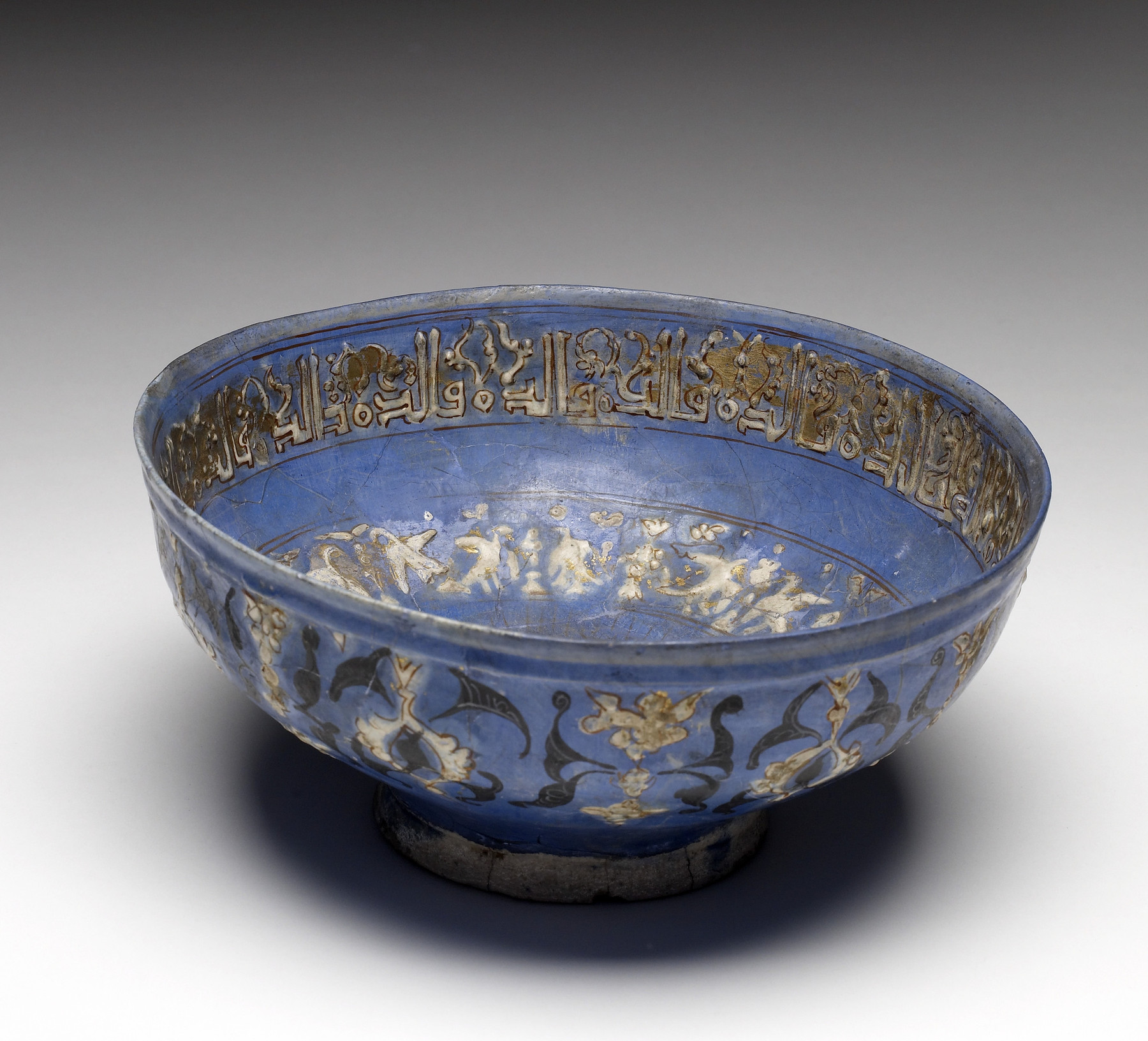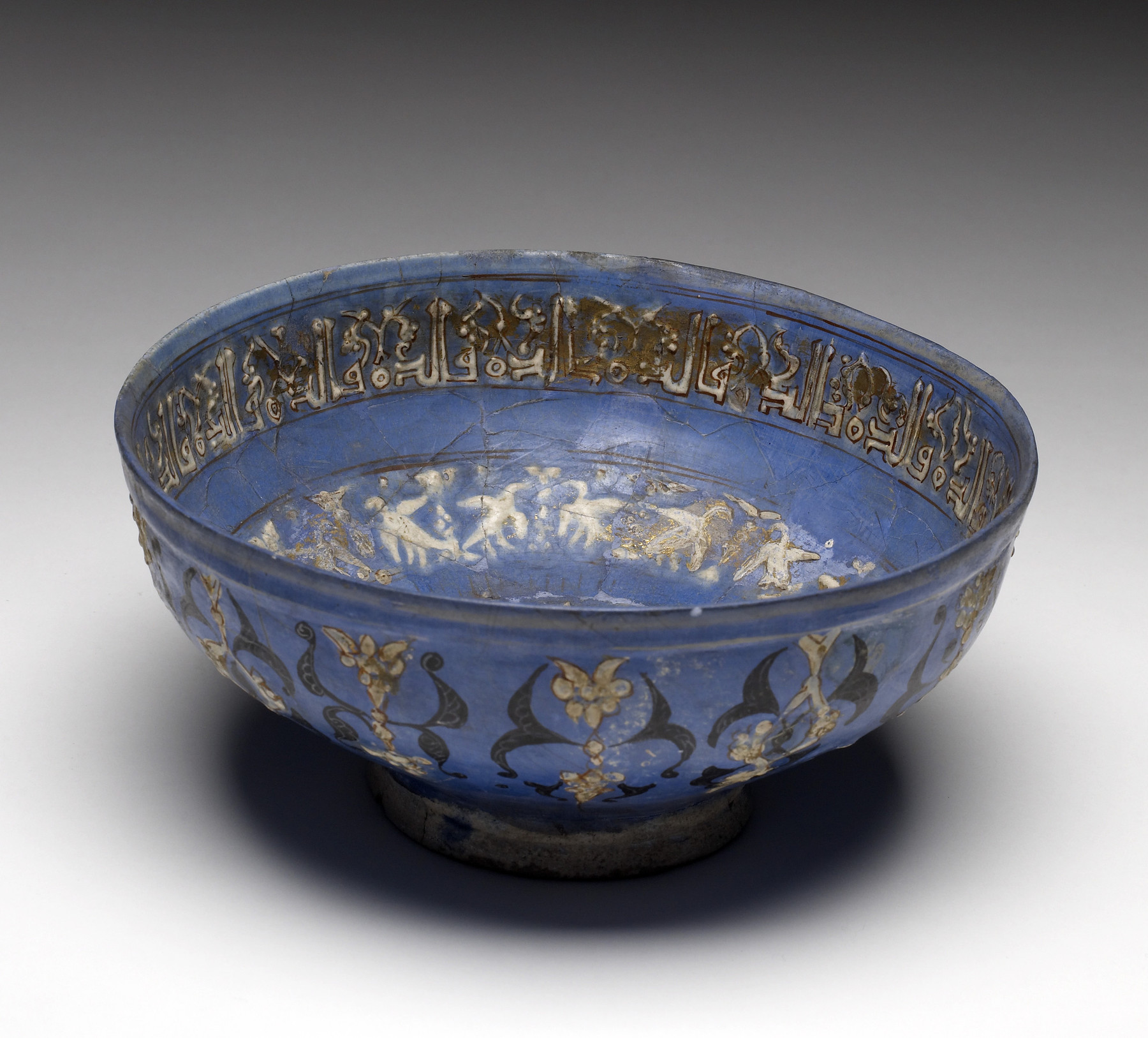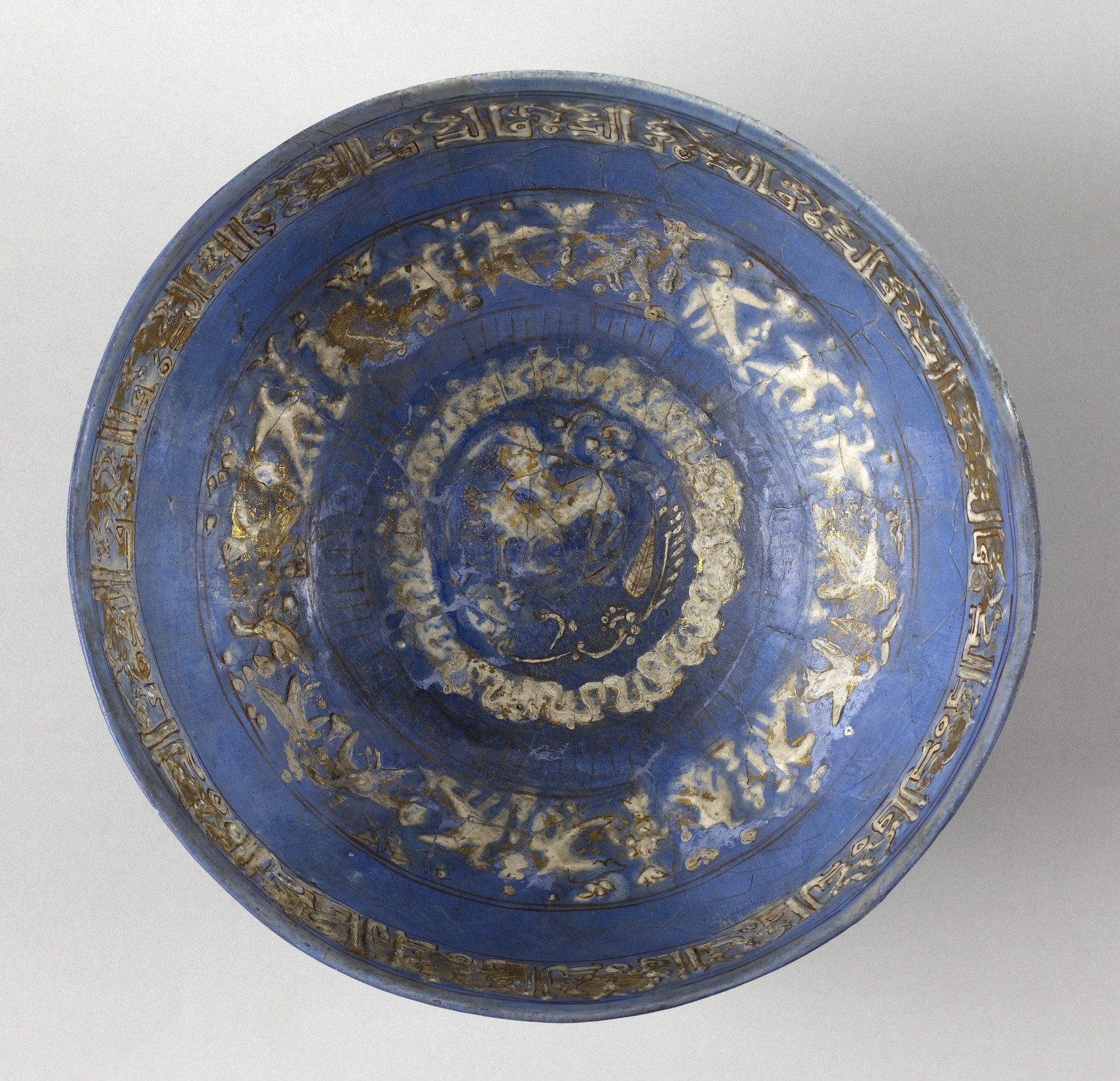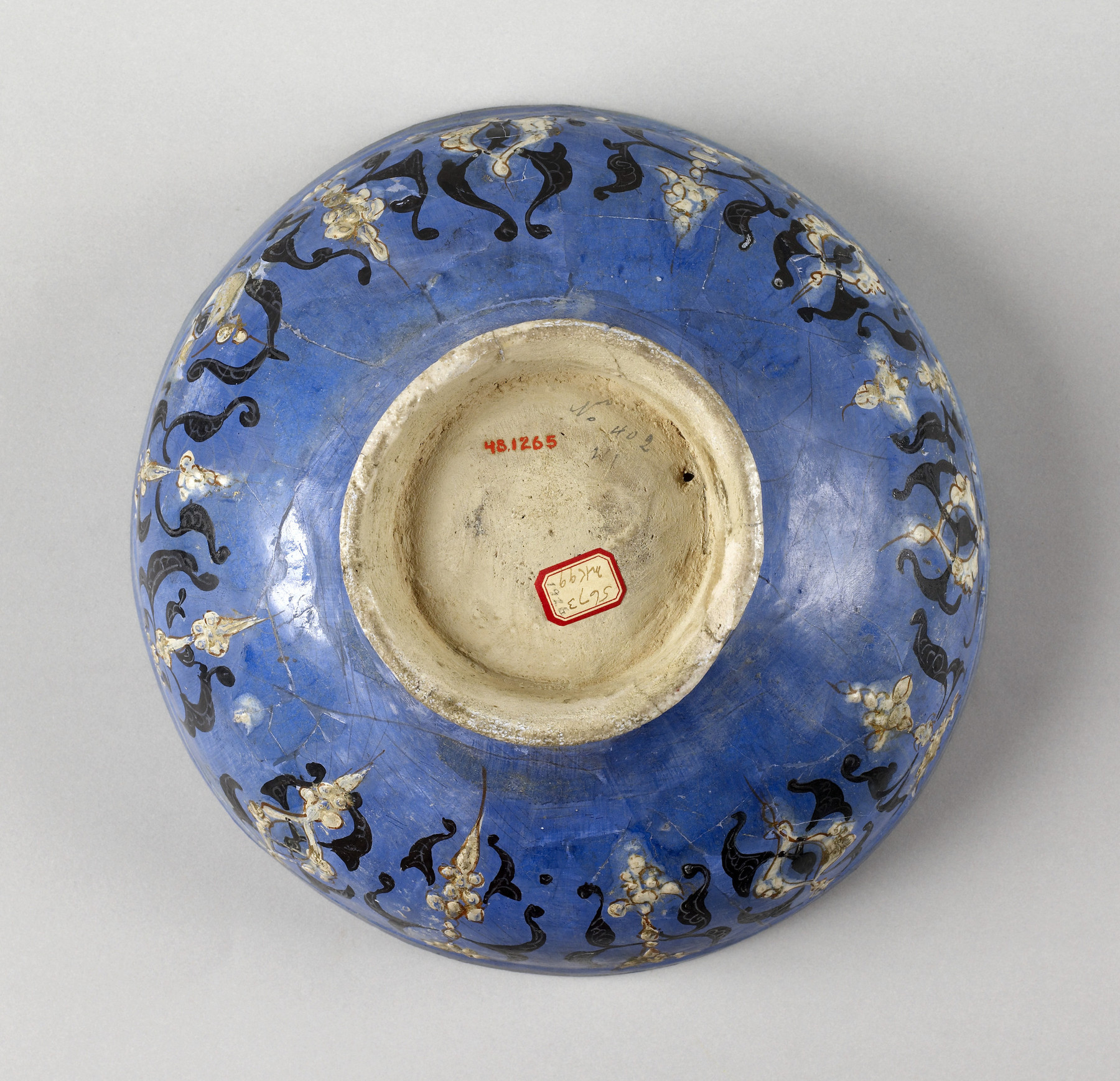Bowl with Birds and Floral Motifs
Mina’i is a modern collectors’ term for ceramics made in Iran during the late 12th to early 13th centuries. The term mina’i, translates as “enamelled” in Persian, designating the colored glass pigments used to paint detailed figural decoration on vessels or tiles, which were then fixed on the ceramic base by multiple firings. The use of a wide range of colors, including turquoise, red, green, purple, and black, also led these types of ceramics to be called by the Persian term “haft rang,” or “seven colors.”
This footed bowl is a type of mina’i ware called “lavjardina,” a term derived from the Persian word for the blue stone lapis lazuli (lavjard). Rather than firing colors on a white background, lavjardina ceramics glazed color over a dark blue base. A repeated motif of birds encircles the central figure. A kufic inscription lines the inside rim of the bowl, while a stylized floral motif is repeated along the outside body of the bowl.
Provenance
Provenance (from the French provenir, 'to come from/forth') is the chronology of the ownership, custody, or location of a historical object. Learn more about provenance at the Walters.
Dikran Kelekian, New York and Paris, [date and mode of acquisition unknown]; Henry Walters, Baltimore, 1926, by purchase; Walters Art Museum, 1931, by bequest.
Geographies
Iran (Place of Origin)
Measurements
Overall: 3 7/8 x 8 3/8 in. (9.8 x 21.3 cm)
Credit Line
Acquired by Henry Walters, 1926
Location in Museum
Not on view
Accession Number
In libraries, galleries, museums, and archives, an accession number is a unique identifier assigned to each object in the collection.
In libraries, galleries, museums, and archives, an accession number is a unique identifier assigned to each object in the collection.
48.1265














